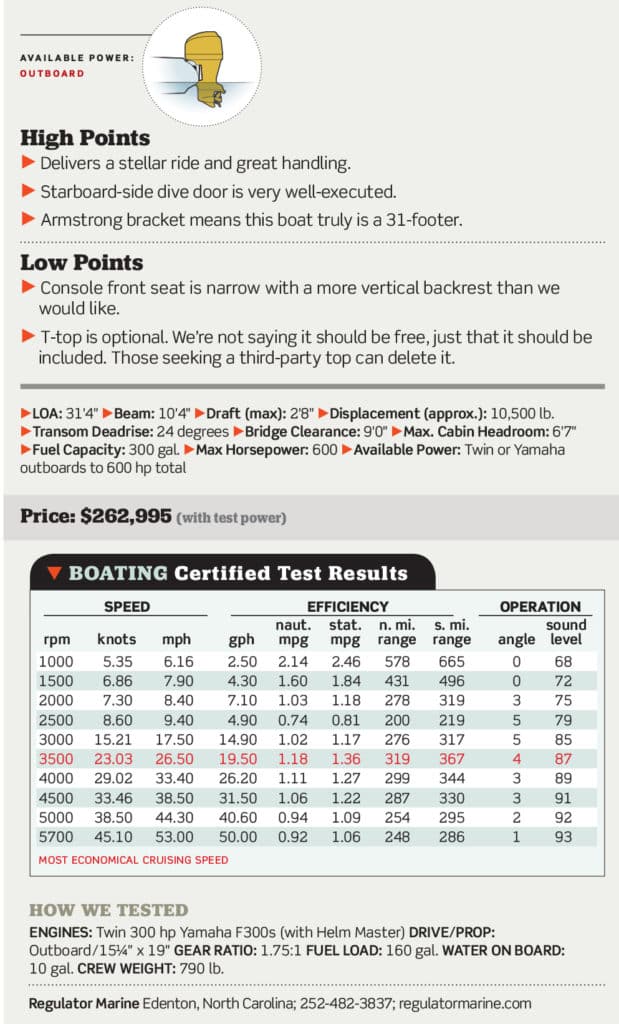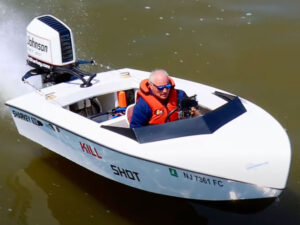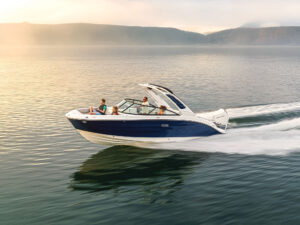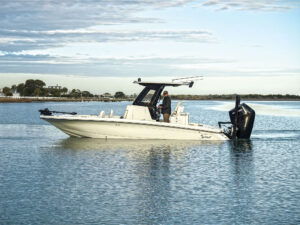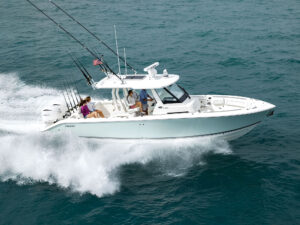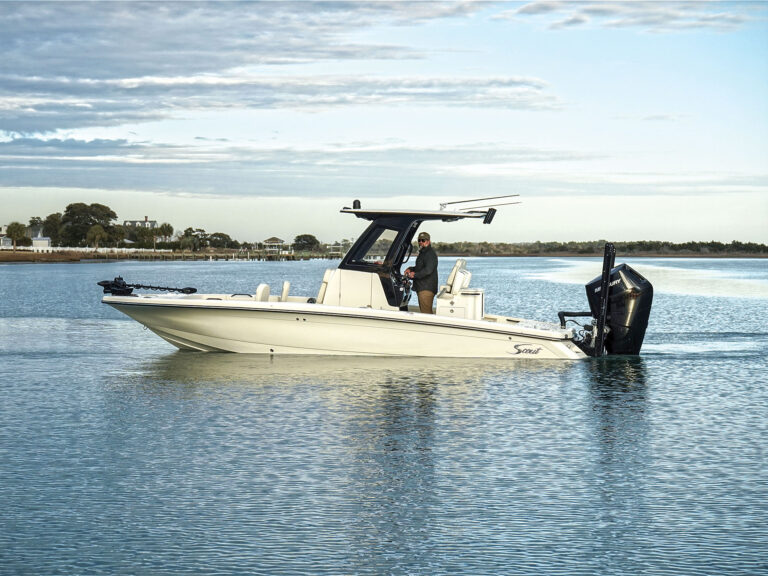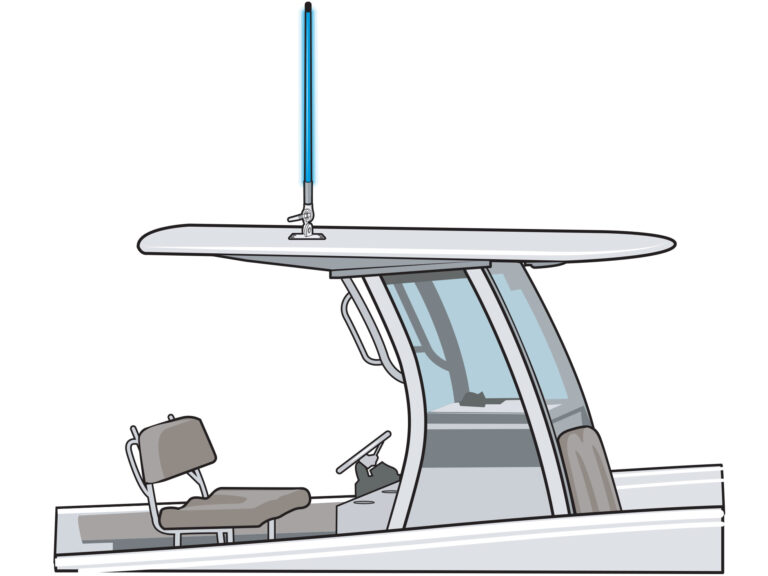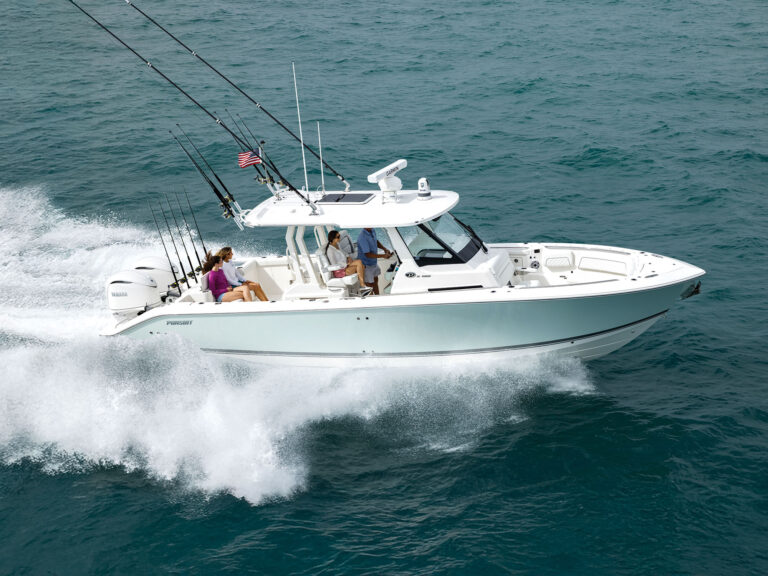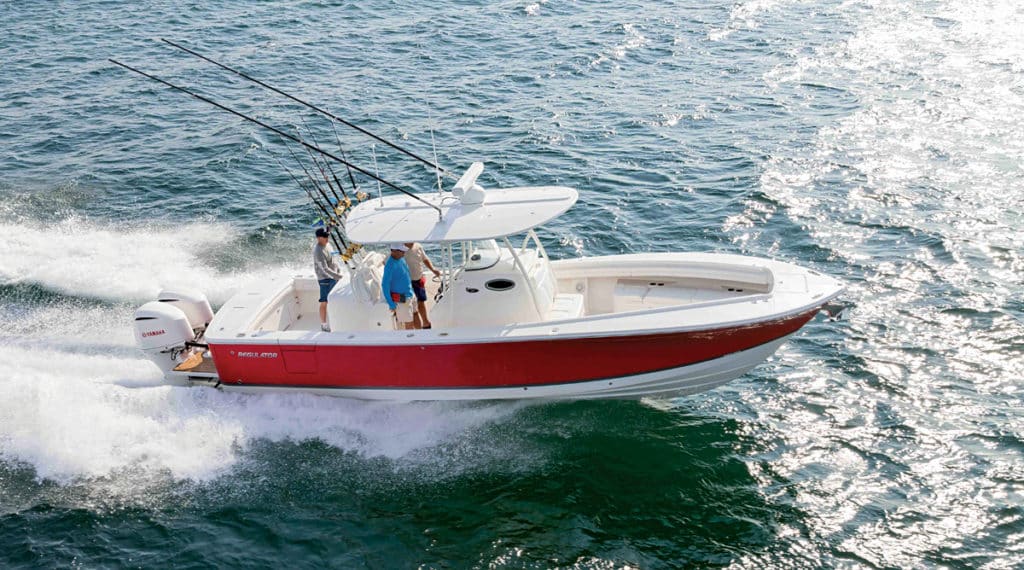
The thing we discovered about running the Regulator 31 through a coastal inlet and out into the ocean is that our confidence built, rather than waned, as we hit the rough stuff. The boat cut through the waves, threw the water aside and let us focus on getting to where we were headed (the fishing grounds, of course). Maintaining course is easier on the 31 than aboard other boats, since the bow isn’t knocked aside, and upon re-entry, the boat hardly slows at all. Instead, it maintains speed and keeps on tracking straight. The tachometers tell this story as well as we can: Aboard boats that struggle more at sea, maintaining a constant boat speed means the numbers are rising and falling through a wide band, since engines need more rpm to push harder-riding boats through a head sea. But the tachs monitoring the twin Yamaha F300s that powered our test boat provided a steady reading as we broke Manasquan Inlet, headed east.
Ride isn’t the only quality that impressed us during a day aboard the Regulator 31. Read on and find out what else we discovered about this boat.
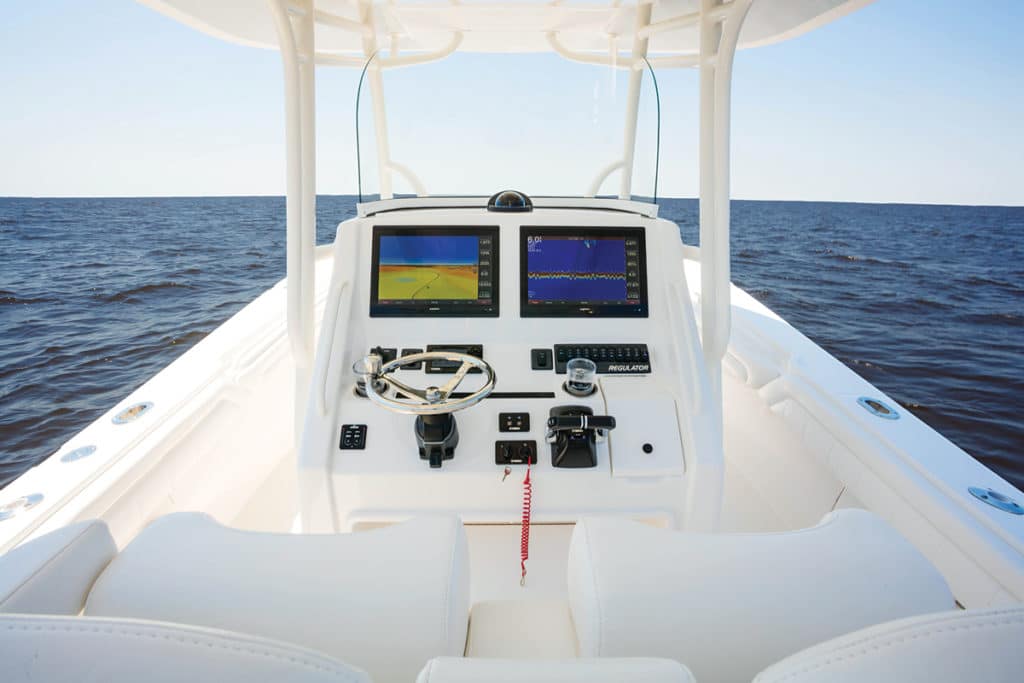
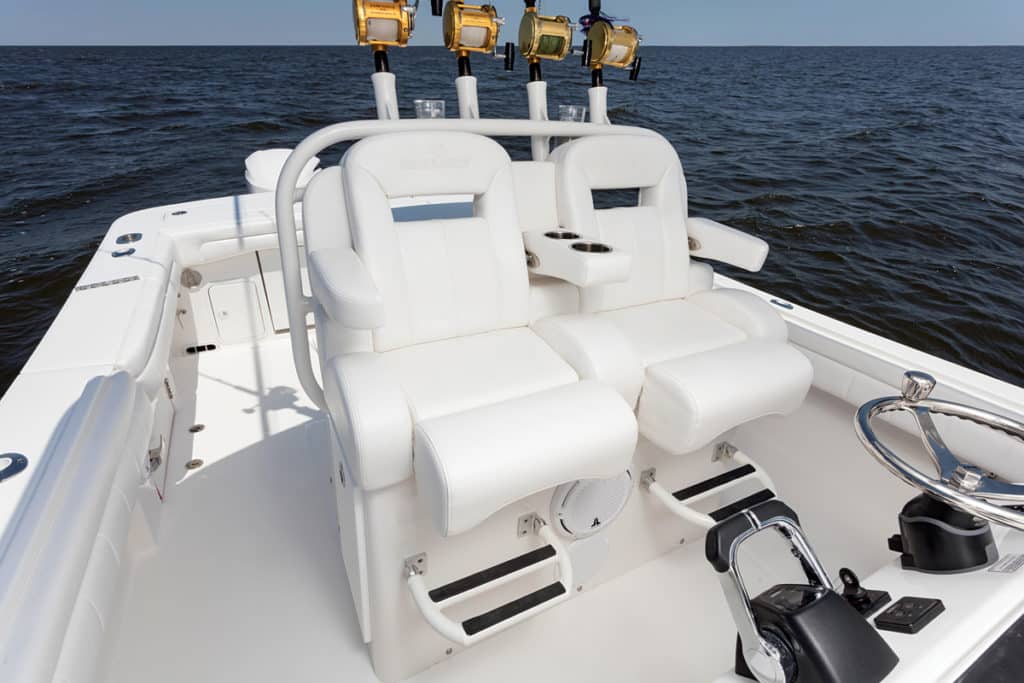
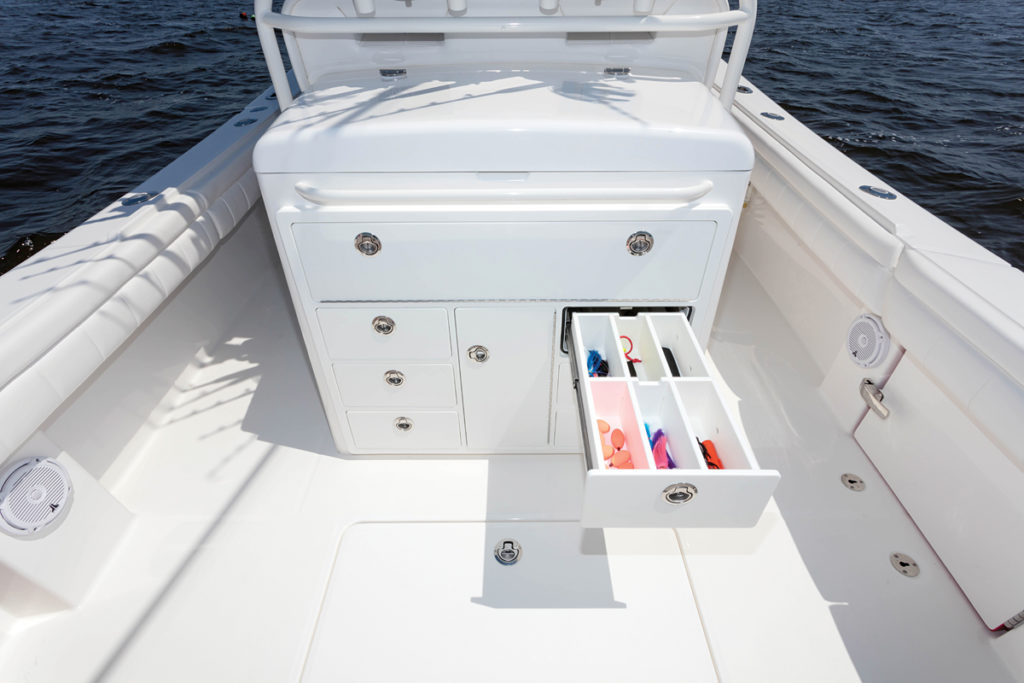
In the pre-dawn darkness, we stowed our gear aboard the Regulator 31 by soft, indirect LED light. It was enough illumination to start noticing some details, like the way all the hatch lids swing on through-bolted hinges and how the underside of the optional T-top, with its surfboard edges, is painted your choice of optional colors — in this case, a glare-reducing gray, which happened to match the gray wedge of color atop the custom-painted outboards and the hull color. We also noticed, while passing duffles and ice, that the transom featured a nice curve to its top. This radius is attractive, sheds water, is salty-looking, and it provides an opening to discuss another transom attribute that sets Regulator apart from most other boat brands.
Unlike most center console boats that utilize a molded-in, integral outboard bracket, Regulator mounts the engines on a bolted-on Armstrong bracket. This delivers a solid, structurally strong transom across the beam while producing classic aesthetics. It also means that the bracket is not counted in the length of the boat. Step aboard the Regulator 31 and it becomes apparent that it compares sizewise with boats denoted as 33- or 34-footers.
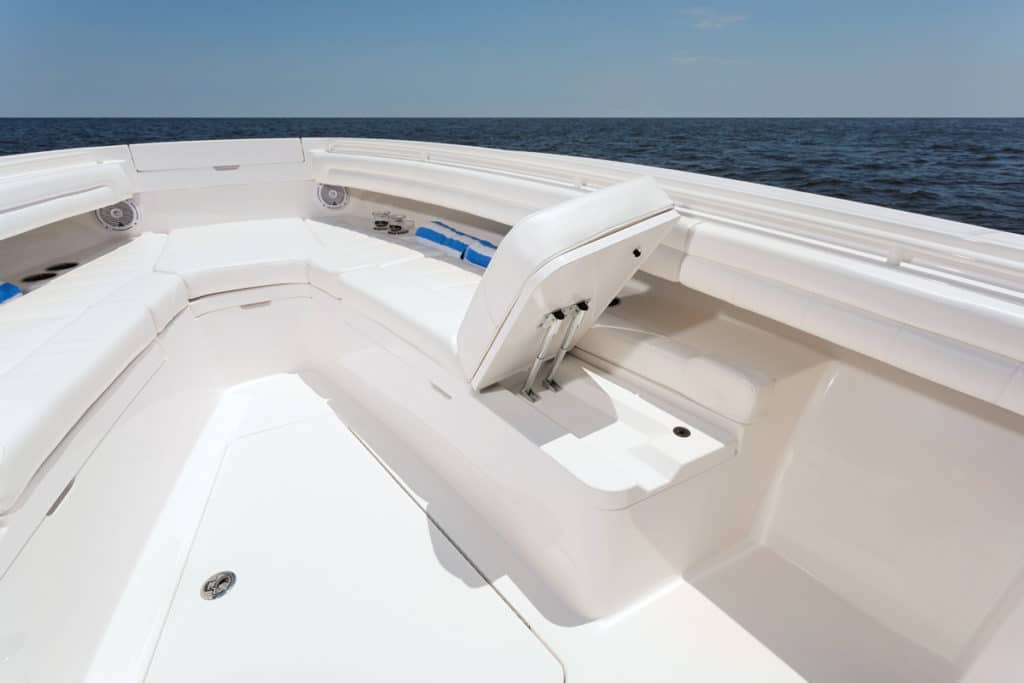
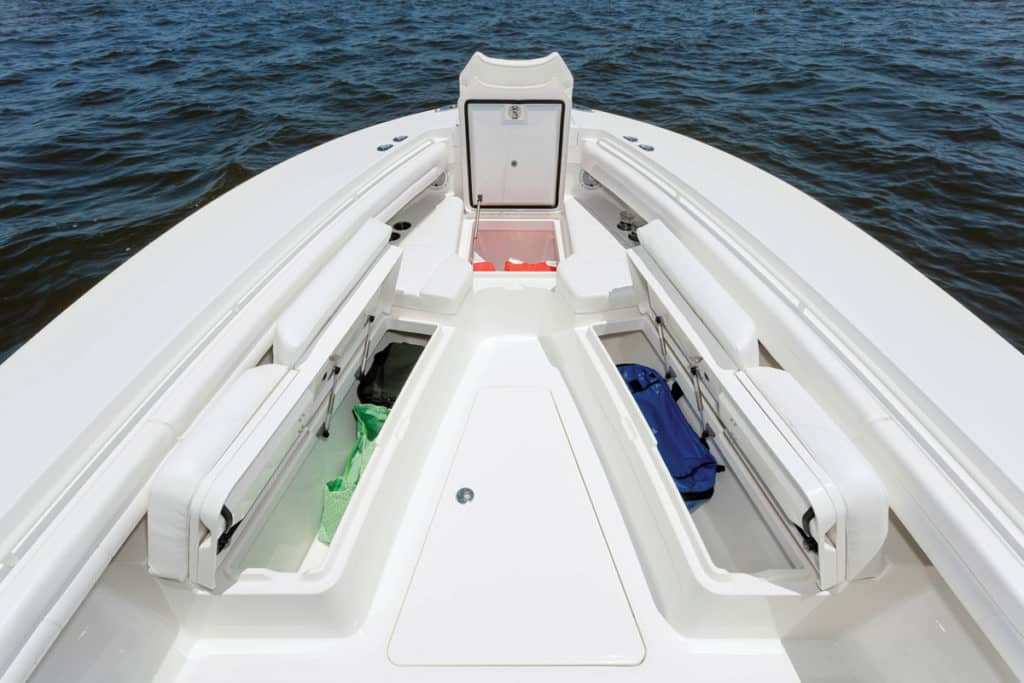
Let’s walk through the boat. The cockpit is wide open and self-bailing. Underfoot and atop the gunwales, we applauded the grippy nonskid, a feature that is astoundingly not found aboard every boat. Standard coaming pads run 360 degrees around the interior, and these were well-made, with just enough stiffness to provide comfort in rough seas and with drains so they won’t get soggy.
To starboard is one of the hallmark features of the Regulator 31: the dive door with an integrated folding ladder. This door is large enough to boat a bigeye tuna or to come and go through while wearing scuba gear. Its use for casual swimming goes without saying. It’s nicely executed with robust hardware and latches.
On the backside of the leaning post, our tester sported a large livewell, complementing the livewell in the transom. There’s an option for a tackle center here also. A cutting board and a deep sink flanked the blue-lined livewell, which is concealed under a lid. Like all lids aboard the Regulator 31, this one was finished on both sides.
In the cockpit sole, a large hatch provides access to the bilge. Here we found excellent access to pumps, filters and through-hull fittings. At the helm, there are footrests on the leaning post and on the console to accommodate various seating, leaning and standing positions, a feature we appreciated. Ditto for the helm armrests.
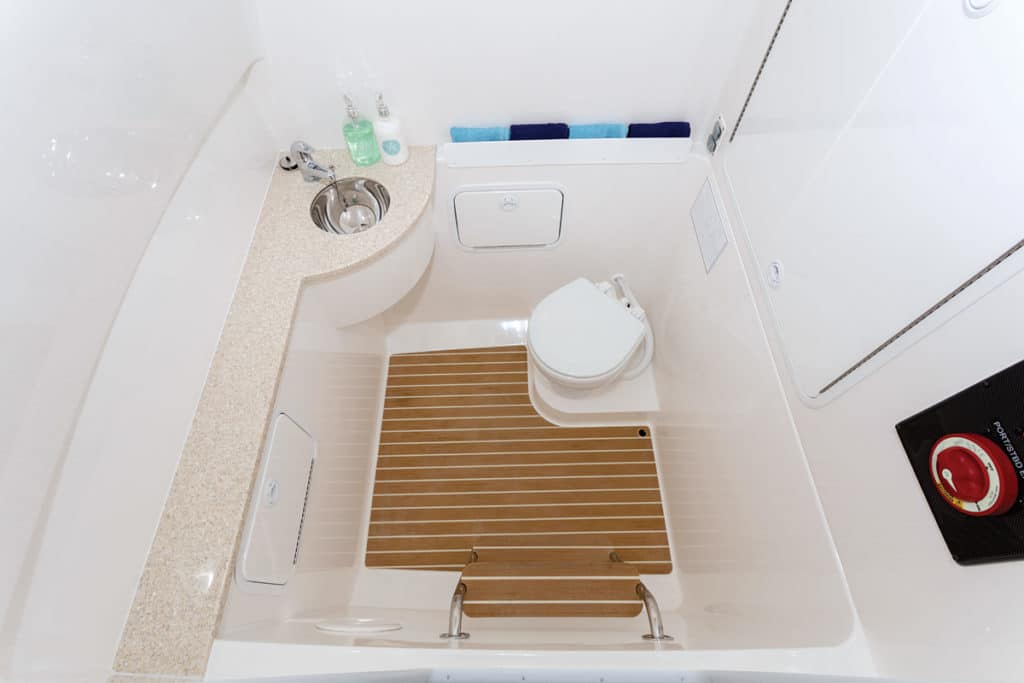
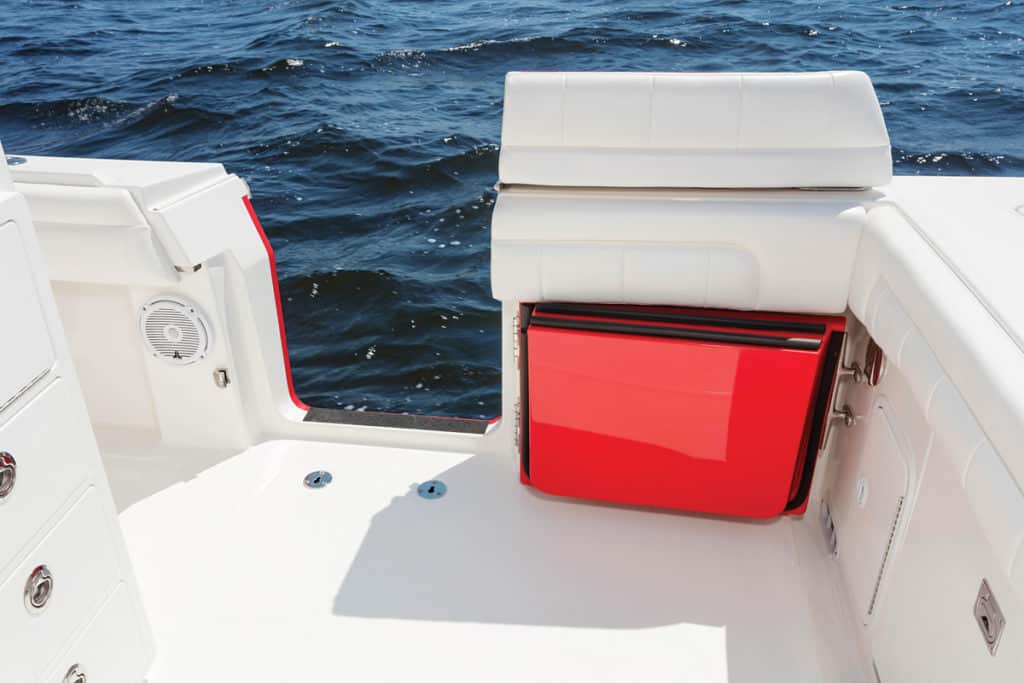
The windshield is curved, large and features no frame, so the view through it is unimpeded. There are two big Garmin multifunction displays at the helm, and all controls and switches are mounted in ways that facilitate ease of use. This is particularly true of the Helm Master joystick, which helped make docking less stressful at the end of our sea trial.
The bow proved to be a multipurpose area. We stood atop the broad bow and cast for stripers early in the day. Later, on the ocean, we checked out how the lids of the V-seating have kickstands that allow them to remain open partway and thus create chaise-style lounges. Naturally, there is stowage within. An optional sun-bed table installs to serve in the roles its name suggests. Two can sit on the padded seat on the front of the console.
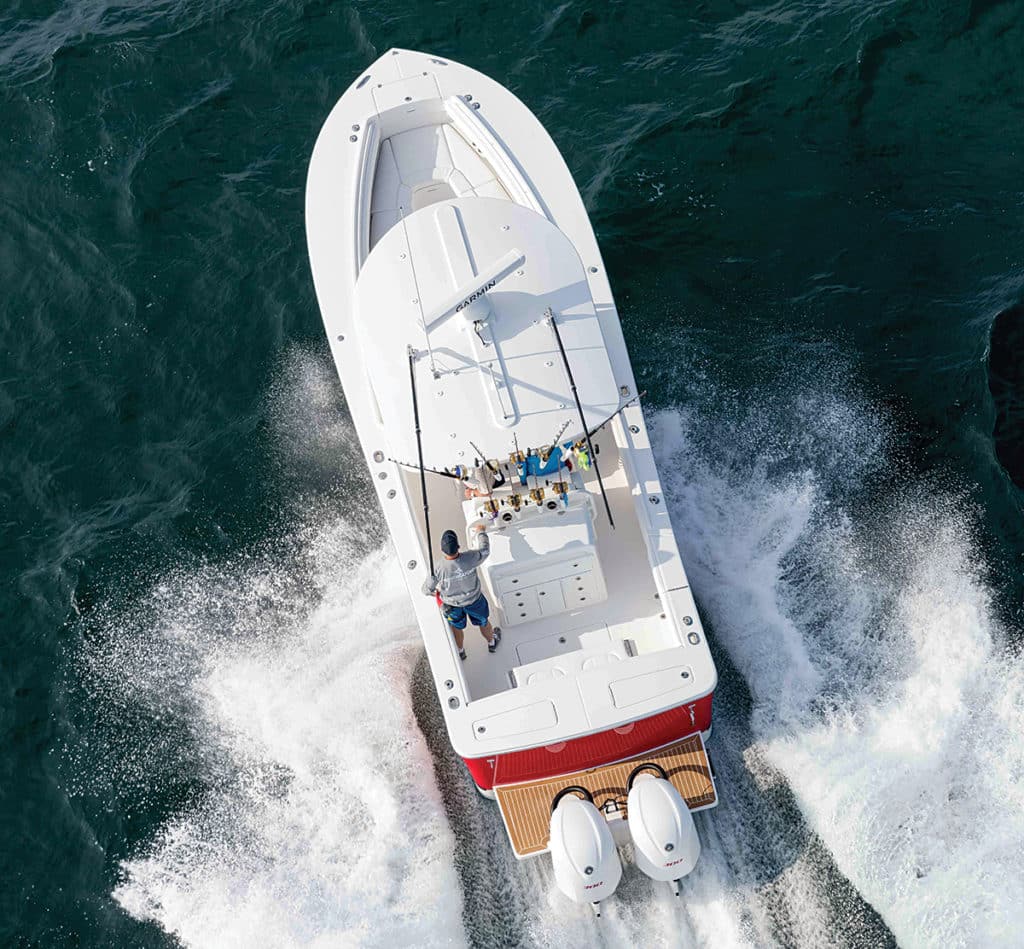
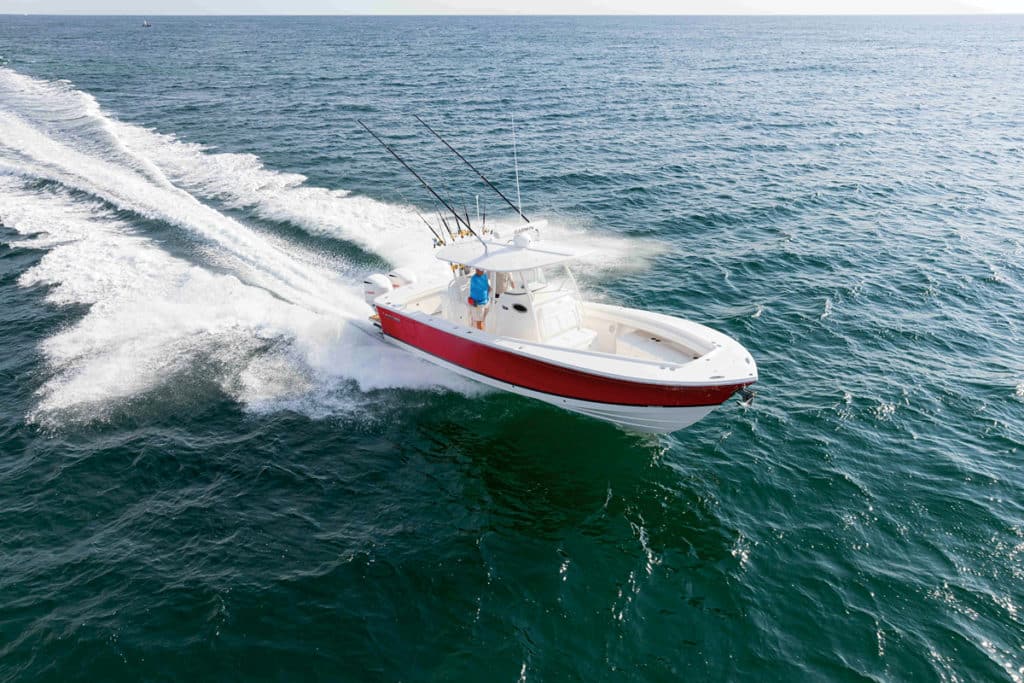
Access to the head in the console is via a generously sized hatch port side. It’s a bright space with a venting port for air and light, and smooth, reflective, easy-to-keep-sanitary gelcoat all around. There’s a long faux-stone top that culminates in a vanity with an inset sink. The commode is an electric head plumbed to a holding tank, and access to the batteries and electronics is excellent from this space.
If you are shopping for a Regulator 31, schedule a sea trial aboard the Southport 33 FE ($287,500, powered like our test boat), which offers a 6-foot berth in the console.
